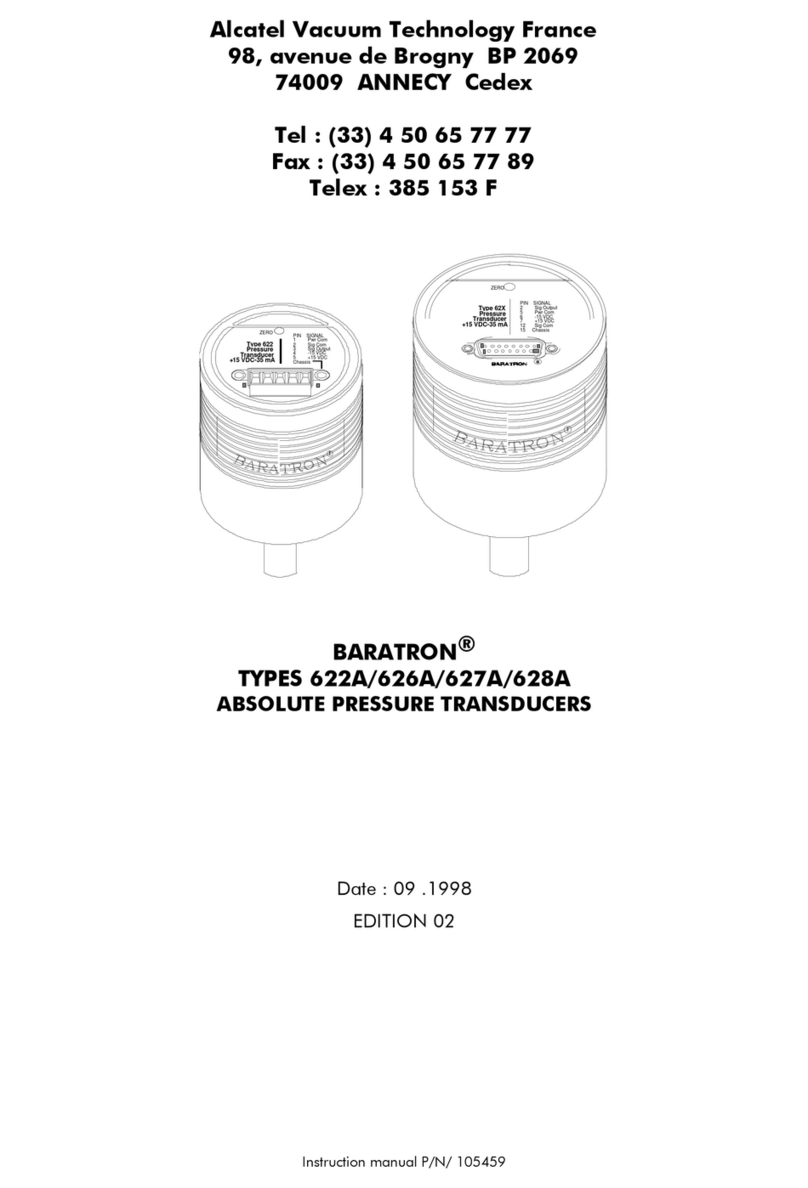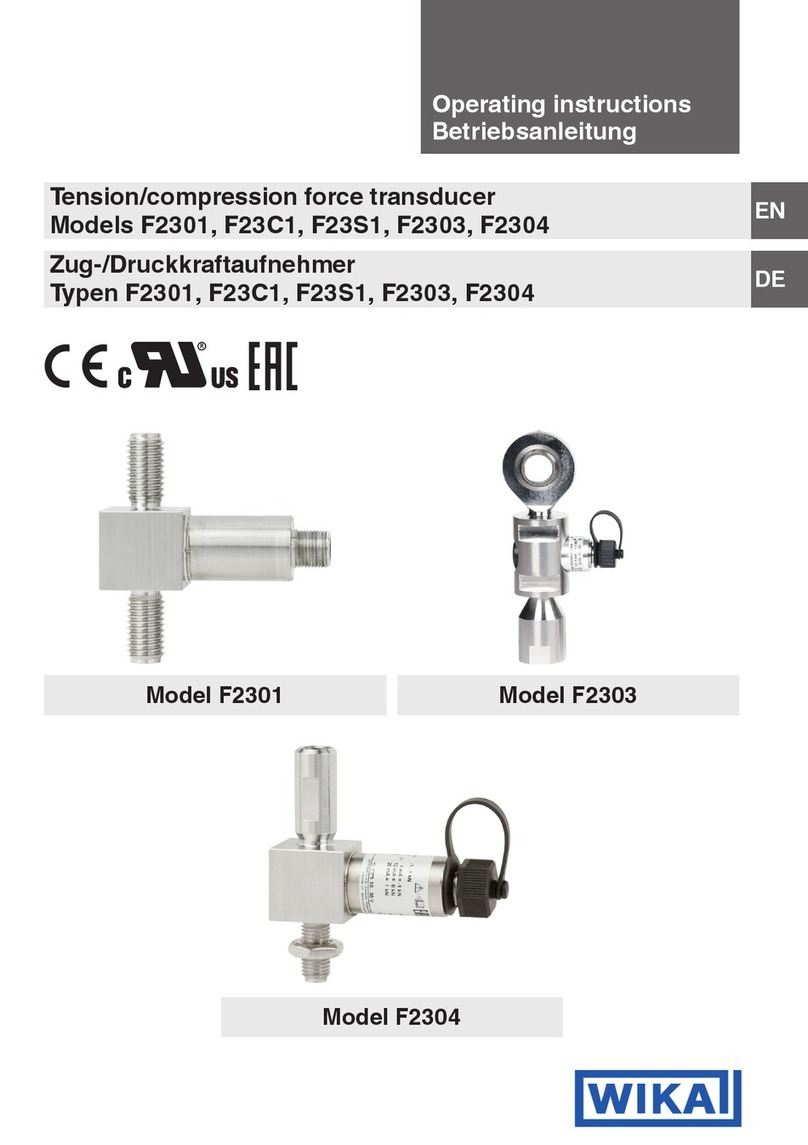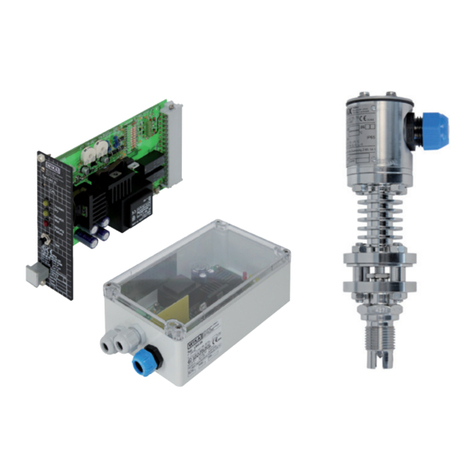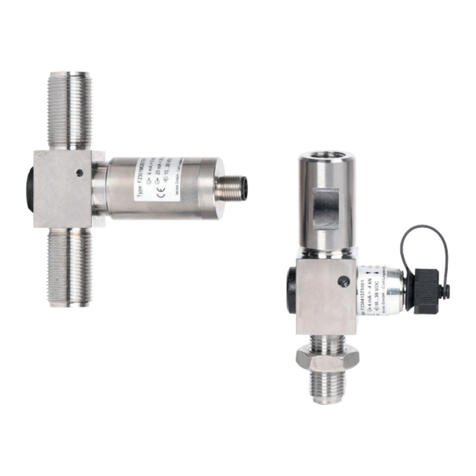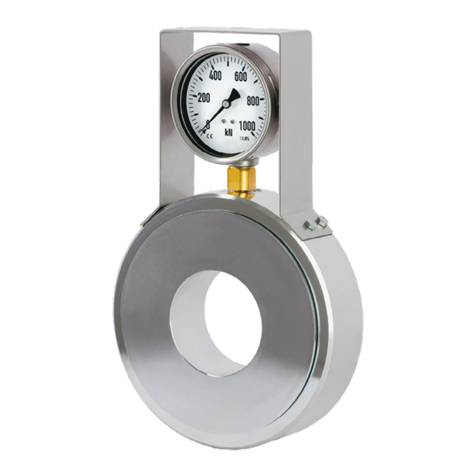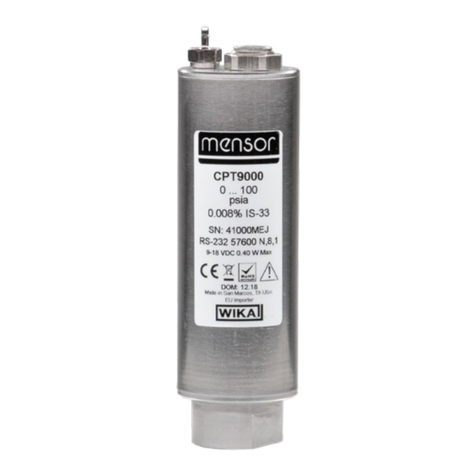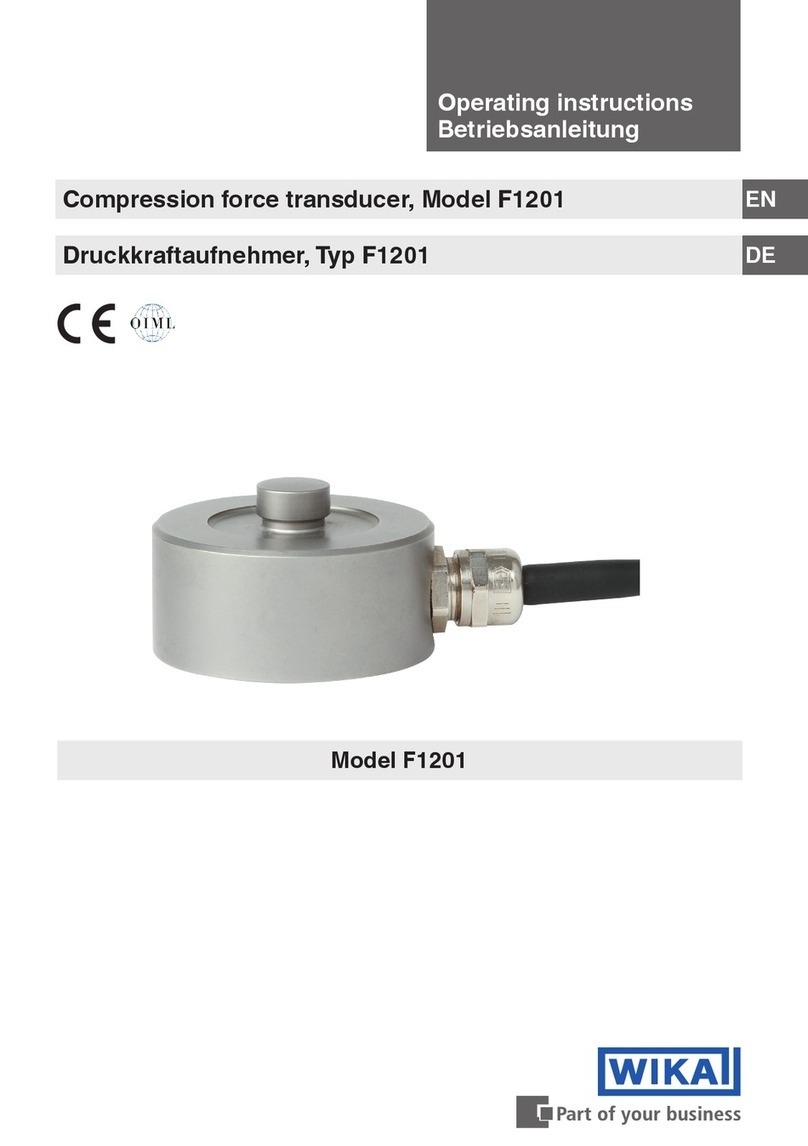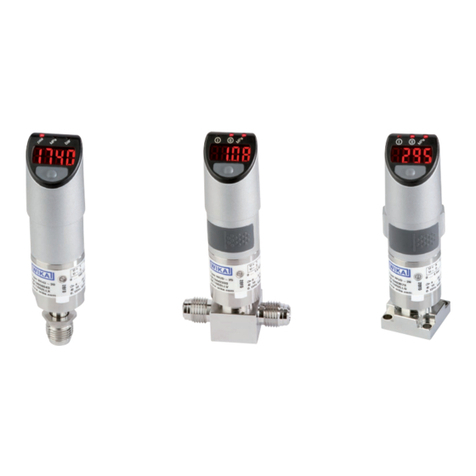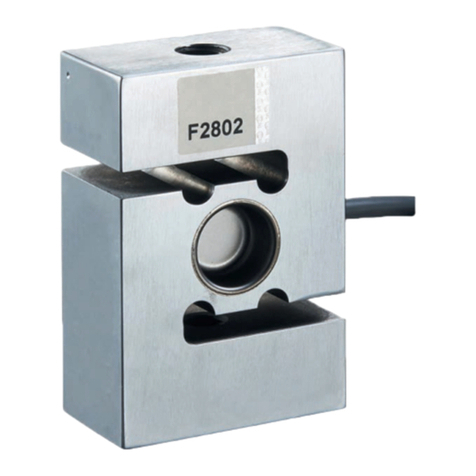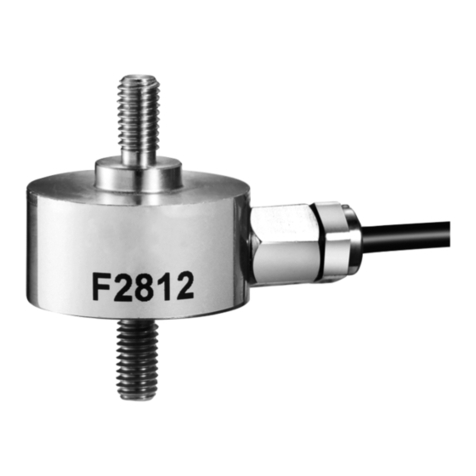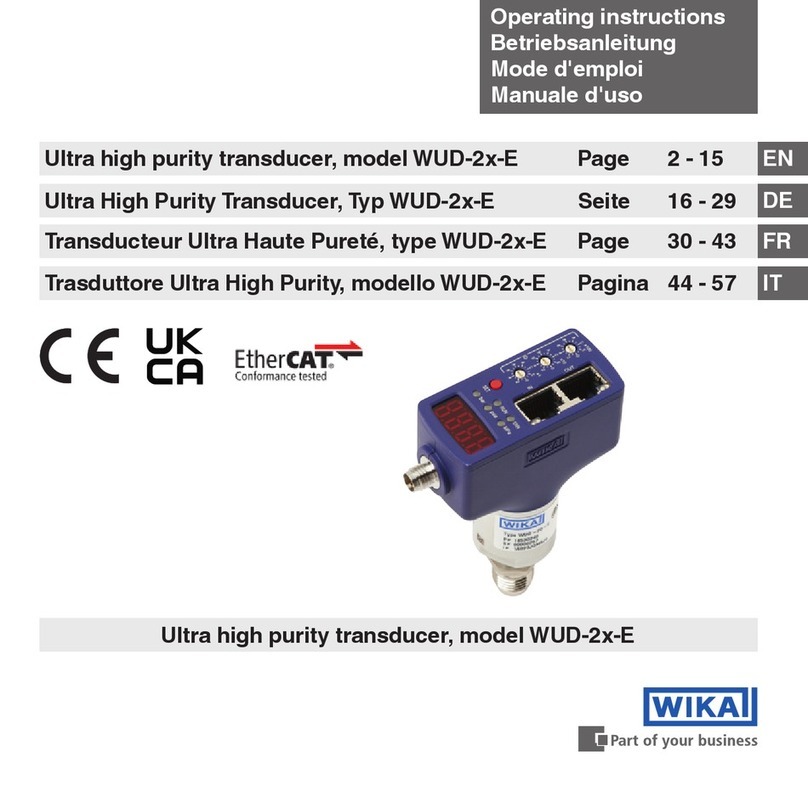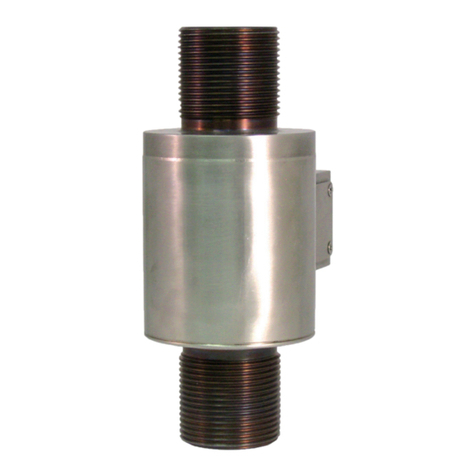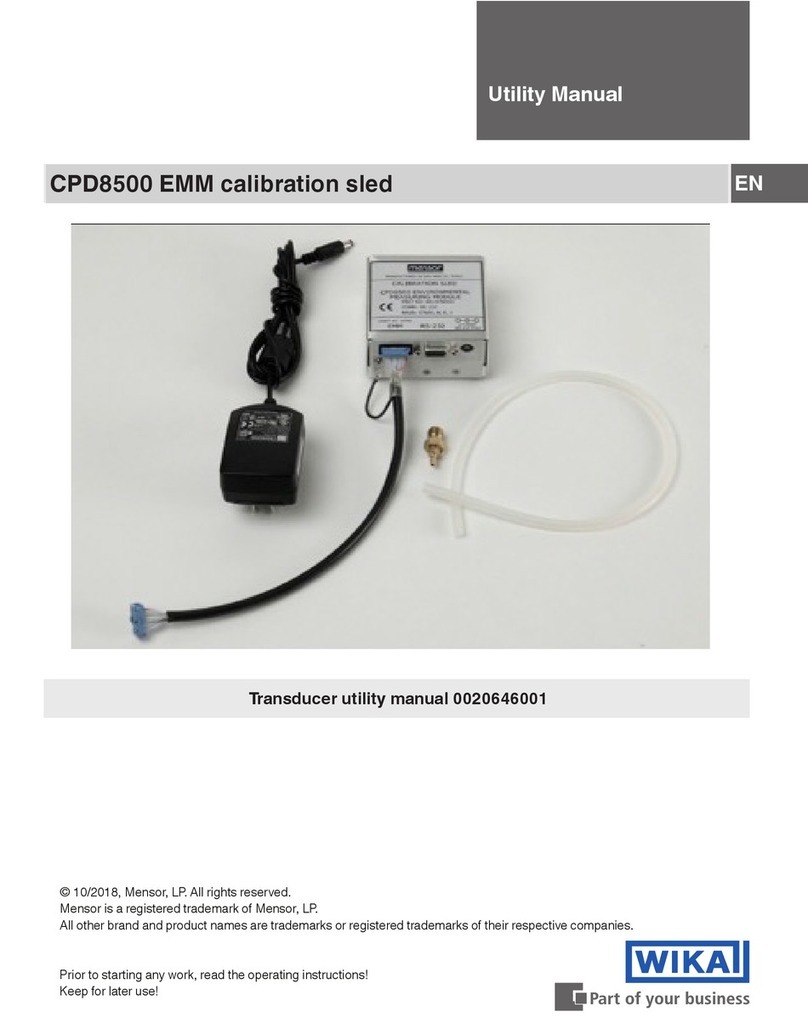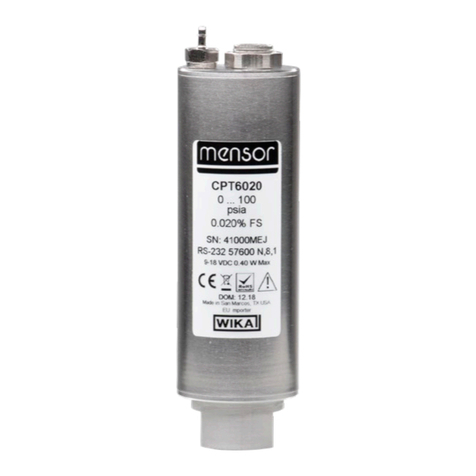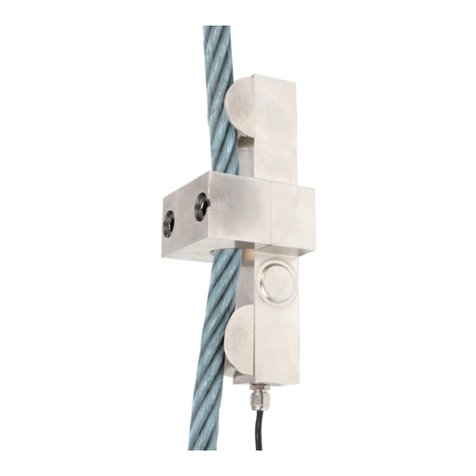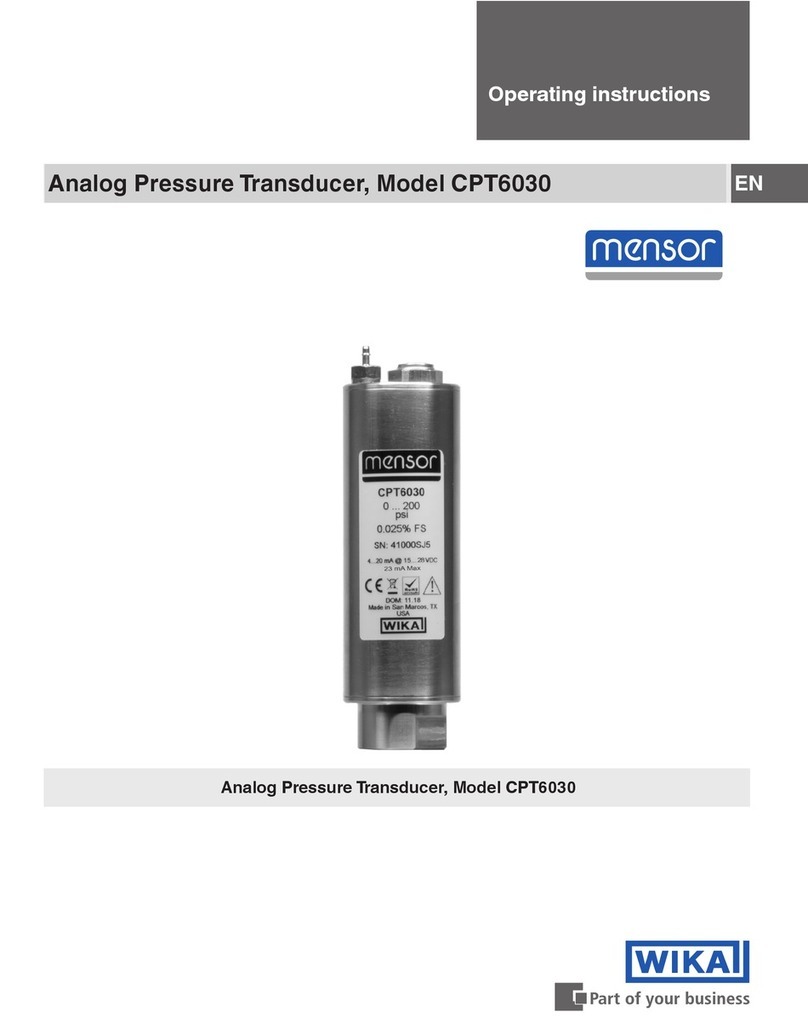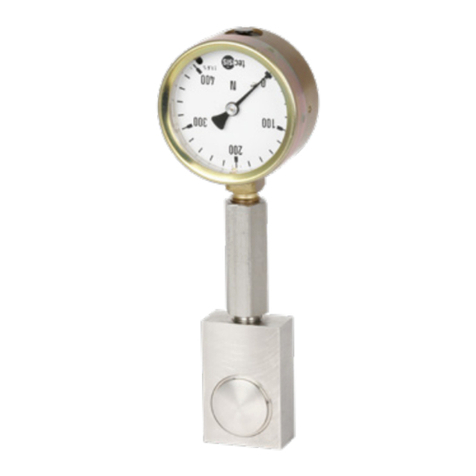
CPT6010 Operating Instructions 5
Digital Pressure Transducer
CPT6010
1. General Information
1.1 Warranty
All products manufactured by Mensor are warranted to be free of defects in workmanship and
materials for a period of one year from the date of shipment. No other express warranty is given,
and no armation of Seller, by words or actions, shall constitute a warranty. SELLER DISCLAIMS
ANY IMPLIED WARRANTIES OF MERCHANTABILITY OR FITNESS FOR ANY PARTICULAR
PURPOSES WHATSOEVER. If any defect in workmanship or material should develop under
conditions of normal use and service within the warranty period, repairs will be made at no charge
to the original purchaser, upon delivery of the product(s) to the factory, shipping charges prepaid.
If inspection by Mensor or its authorized representative reveals that the product was damaged by
accident, alteration, misuse, abuse, faulty installation or other causes beyond the control of Men-
sor, this warranty does not apply. The judgment of Mensor will be nal as to all matters concerning
condition of the product, the cause and nature of a defect, and the necessity or manner of repair.
Service, repairs or disassembly of the product in any manner, performed without specic factory
permission, voids this warranty.
MENSOR MAKES NO WARRANTY OF ANY KIND WITH REGARD TO THIS MANUAL, INCLUD-
ING, BUT NOT LIMITED TO, THE IMPLIED WARRANTIES OF MERCHANTABILITY AND FIT-
NESS FOR A PARTICULAR PURPOSE. Mensor shall not be liable for errors contained herein or
for incidental or consequential damages in connection with the furnishing, performance, or use of
this material.
1.2 Important Notice
The product specications and other information contained in this manual are subject to change
without notice.
Mensor has made a concerted eort to provide complete and current information for the proper use
of the equipment. If there are questions regarding this manual or the proper use of the equipment,
contact either Mensor or WIKA:
Mensor WIKA Alexander Wiegand SE & Co. KG
201 Barnes Drive Alexander-Wiegand-Straße 30
San Marcos, TX 78666 D-63911 Klingenberg / Germany
tel: 1-512-396-4200 tel: (+49) 93 72/132-5015
1-800-984-4200 (USA only) website: www.wika.de
website: www.mensor.com fax: (+49) 93 72/132-8767
fax: 1-512-396-1820 email: CTsales@wika.com
email: sales@mensor.com
tech.support@mensor.com
Any reproduction of this manual or parts thereof by any means is prohibited.











